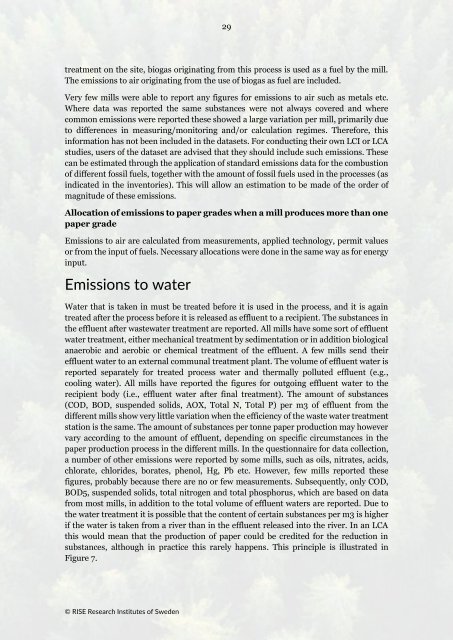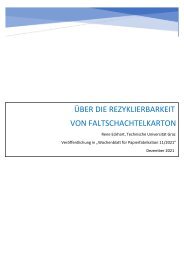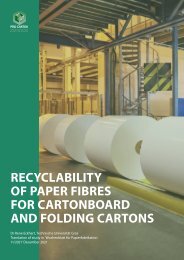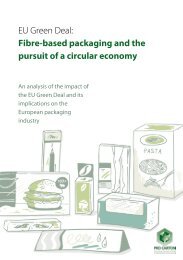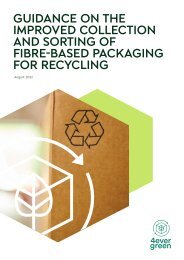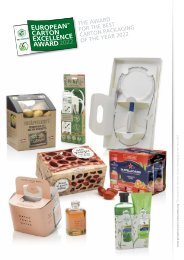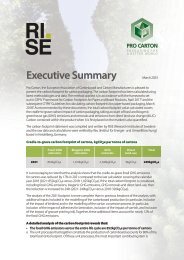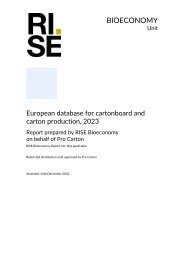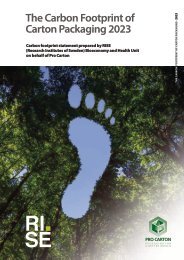European Database for Cartonboard and Carton Production 2023
You also want an ePaper? Increase the reach of your titles
YUMPU automatically turns print PDFs into web optimized ePapers that Google loves.
26<br />
b. Another possibility is to consider the paper <strong>and</strong> excess electricity as co-products.<br />
<strong><strong>Carton</strong>board</strong> <strong>and</strong> electricity are then both “products” from the process. In an LCA this<br />
would require allocation of inputs <strong>and</strong> outputs to both products.<br />
The reported weighted averages of the fuel consumption <strong>and</strong> emission to air associated<br />
with the cartonboard production are calculated according to method b, as this has<br />
become common practice at the mills. This means that the fuel consumption <strong>and</strong><br />
emissions to air reported in the inventories do not include the production of the sold<br />
electricity <strong>and</strong> the amount of the sold electricity is not reported. This was calculated as<br />
follows: the fuel consumption <strong>and</strong> emissions to air associated with the total heat<br />
production <strong>and</strong> the net electricity used on site were allocated to the cartonboard<br />
production<br />
Figure 6<br />
CHP, Combined heat <strong>and</strong> power generation<br />
Diesel or gasoil/LPG used <strong>for</strong> internal transports are also reported in the inventories.<br />
Allocation of energy to paper grades when a mill produces more than one<br />
paper grade<br />
Purchased energy <strong>and</strong> fuels are measured, because they paid <strong>for</strong>. Allocation <strong>for</strong> fuels <strong>and</strong><br />
electricity input is calculated according to energy (heat <strong>and</strong> electricity) required <strong>for</strong> the<br />
production of the different paper grades. Allocation of the other fuels, such as diesel oil<br />
used <strong>for</strong> internal transportation, was calculated according to mass production of each<br />
paper grade.<br />
Water inputs <strong>and</strong> outputs<br />
When paper mills use water, they do not consume this water during the production<br />
process. After (re)use it is returned to the rivers, lakes or seas as cooling water <strong>and</strong><br />
purified effluent water. A limited amount of water is evaporated (about 1-1.5 m3/tonne<br />
nsp) in the drying section of the paper production. The water debate focuses on the<br />
impact of water consumption. This is best reflected in the local water availability rather<br />
than in the amount of water taken into the mills. There<strong>for</strong>e, the appropriate indicator is<br />
the net difference of water taken in <strong>and</strong> water returned to the rivers or lakes (water<br />
consumed, not taken in).<br />
© RISE Research Institutes of Sweden


